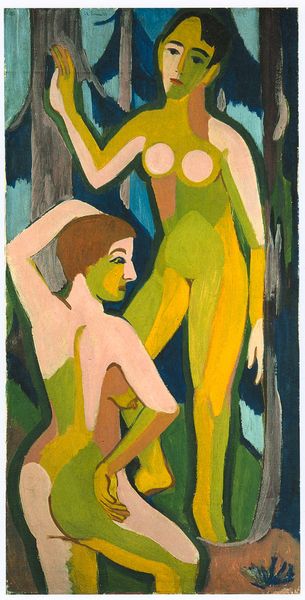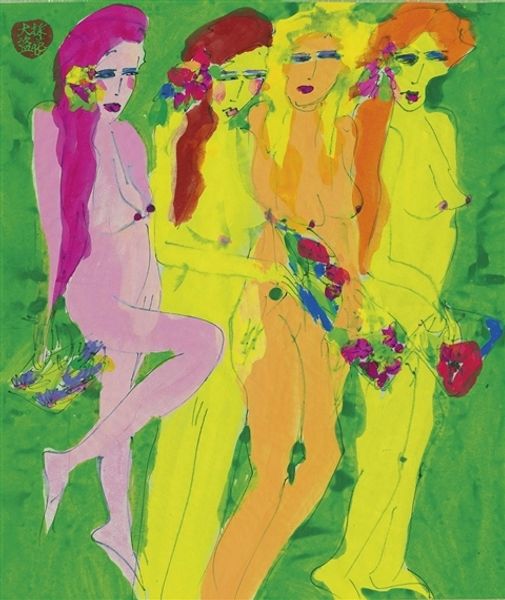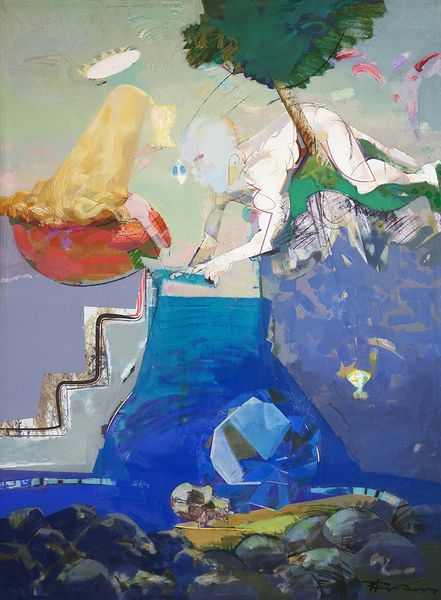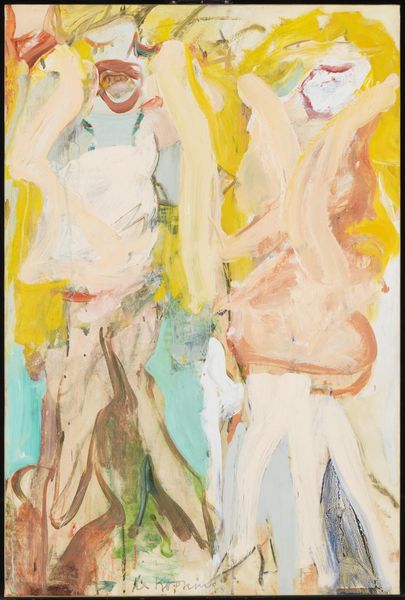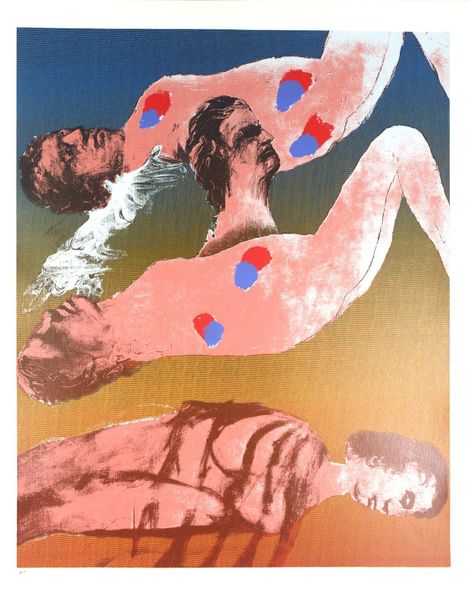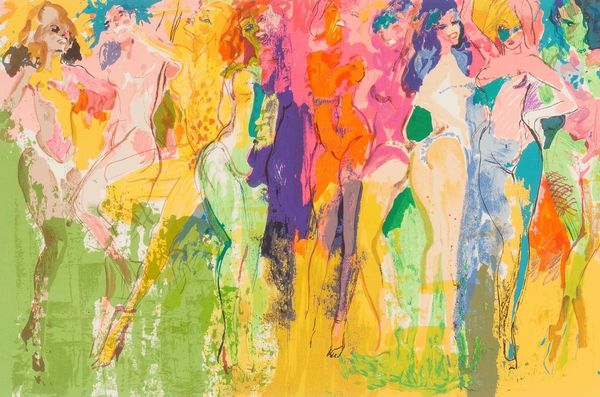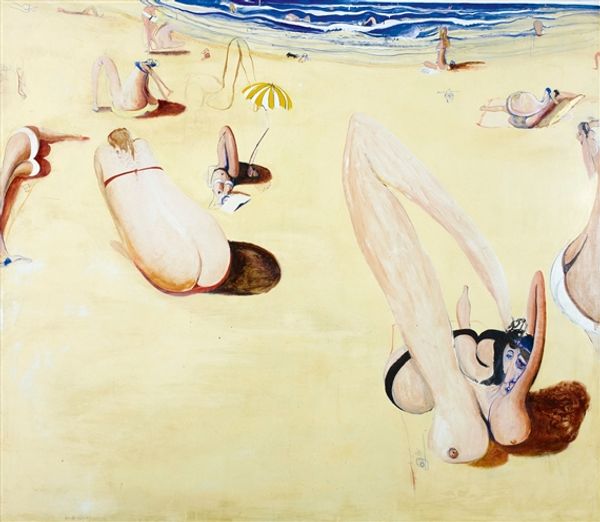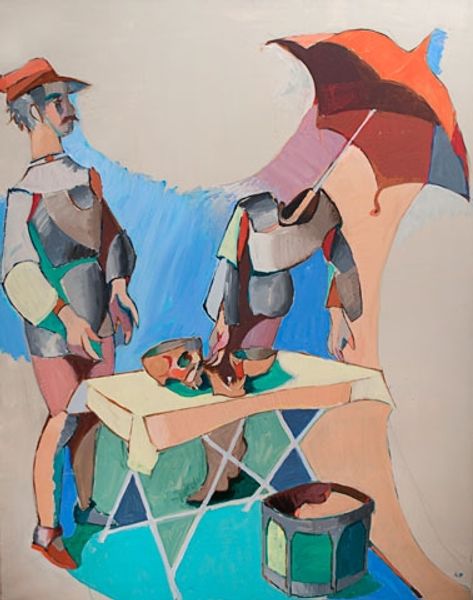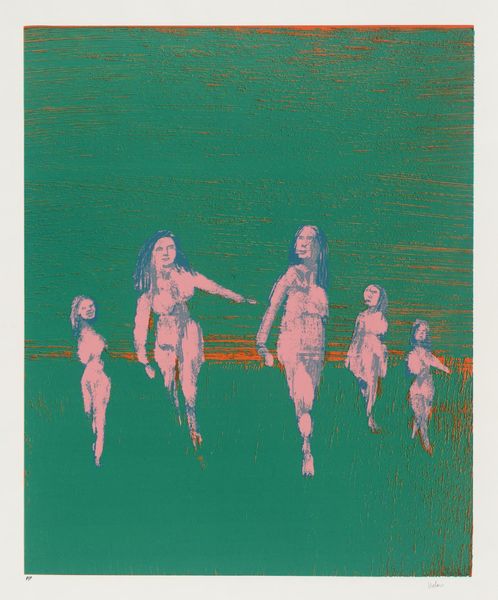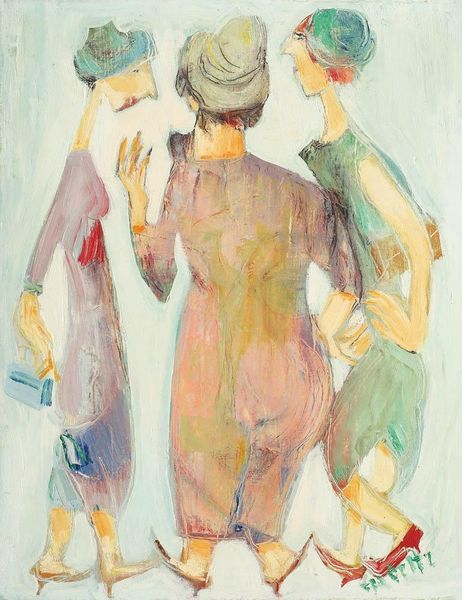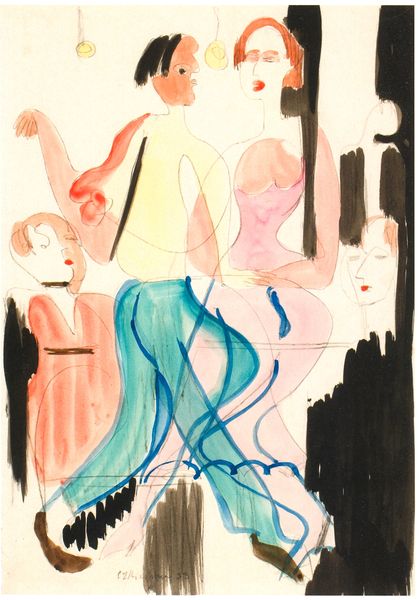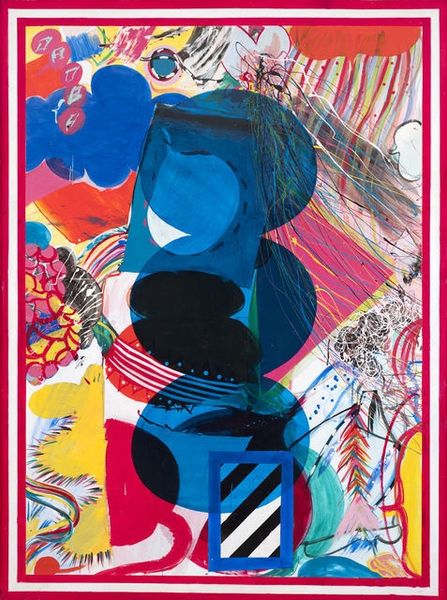
Copyright: Martial Raysse,Fair Use
Editor: Martial Raysse’s "Ciné," created in 1964 with mixed media, is… striking. The figures almost feel like advertisements layered onto a landscape, and the neon signage adds a strange dimension. What do you make of its combination of the natural and the artificial? Curator: Well, in 1964, the Pop Art movement was really gaining traction, challenging the established art world with its embrace of consumer culture. Raysse’s work here exemplifies that moment. Consider how the idealized female figures, almost like movie stars, are juxtaposed against this almost aggressively artificial landscape. Does this suggest a critique of how women are portrayed in media and advertising? Editor: I hadn't thought of it that way, but I see what you mean. The colors are so heightened and unnatural. So the painting isn’t necessarily celebrating these images, but questioning them? Curator: Exactly. Think about the political context as well: the burgeoning feminist movement was starting to question traditional roles for women. By appropriating and altering these images, Raysse is inserting himself into that dialogue. The "Ciné" neon light, too, draws attention to the artificial construction of imagery in film. What do you make of that detail? Editor: It seems to emphasize that the images are being produced, manufactured and commercialized. So the artwork acts like a commentary on society at the time, the start of this "image culture," or something. I appreciate the perspective you've given; I wasn't looking at the socio-political factors, but I should. Curator: Art rarely exists in a vacuum. Remembering that social lens truly changes everything. Editor: Definitely given me food for thought. Thank you.
Comments
No comments
Be the first to comment and join the conversation on the ultimate creative platform.
